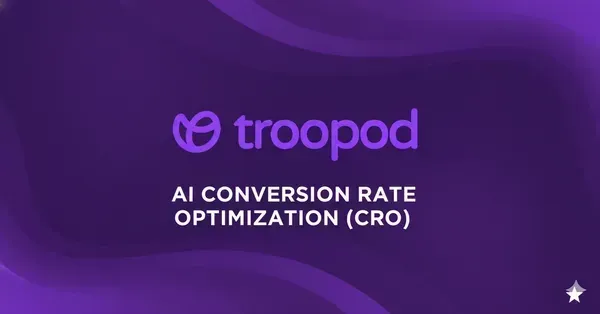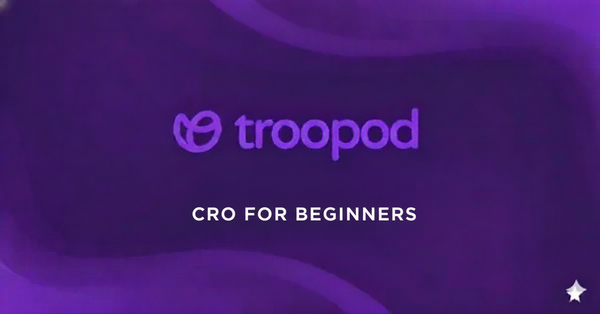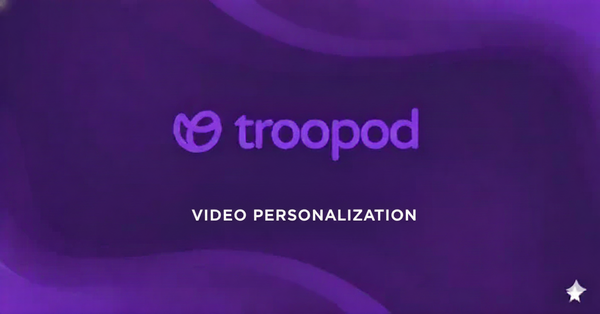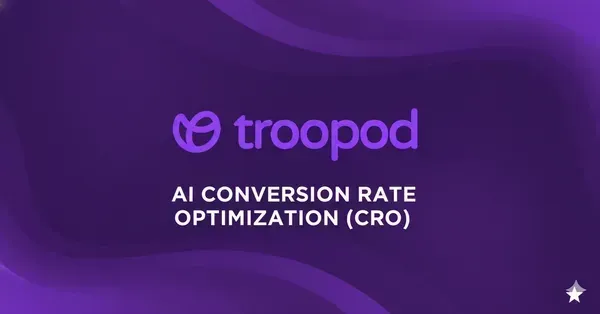Segment & Conquer: How to Build 6 Customer Segments That Drive 3x More Revenue
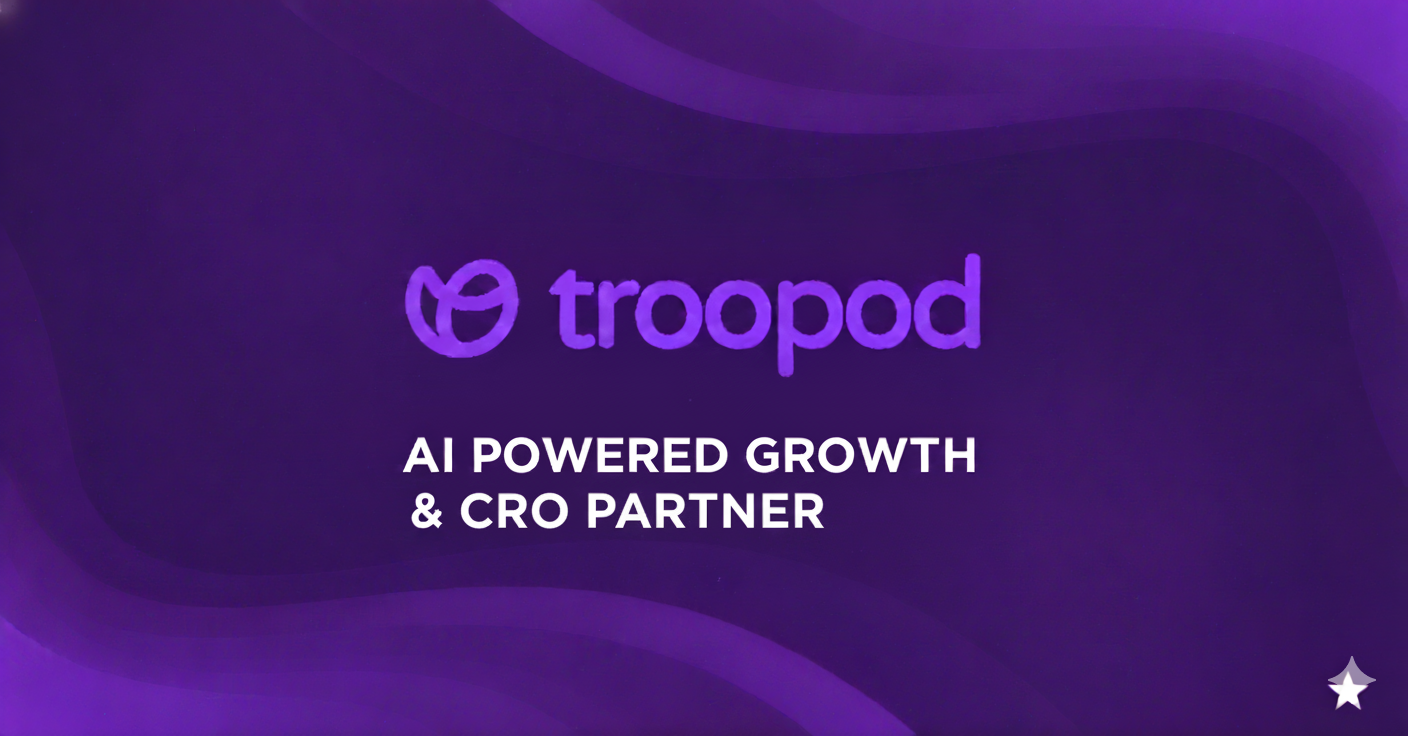
The ₹22 Lakh Wake-Up Call
Two beauty brands in Bangalore. Both selling to "women aged 25-40 interested in skincare."
Brand A's Approach: "Our target customer is urban women, 25-40, working professionals, interested in premium skincare."
Marketing strategy: One message for everyone. One homepage for all visitors. Same email campaigns to entire list.
Result: 1.6% conversion rate, ₹18.4 lakhs monthly revenue.
Brand B's Approach: Same demographic, but segmented into 6 distinct groups:
- First-time browsers (curious, need education)
- Price-conscious researchers (comparing options)
- Premium buyers (quality over price)
- Repeat purchasers (convenience seekers)
- Gift shoppers (different motivations)
- Skin-concern specific (acne, aging, pigmentation)
Marketing strategy: Different message for each segment. Personalized experiences. Targeted campaigns.
Result: 4.8% conversion rate, ₹56.2 lakhs monthly revenue.
Same traffic. Same products. Same ad spend.
The difference? ₹37.8 lakhs monthly (3.05x revenue).
After implementing customer segmentation for 89 D2C brands across India, we discovered something that fundamentally changed how we think about growth: The "target audience" approach is dead. The segmentation approach is everything.
Brands treating all customers the same are competing with one hand tied behind their back against brands that segment, personalize, and conquer.
This is the complete guide to building the 6 customer segments that actually drive revenue, with real frameworks, implementation roadmaps, and exact tactics used by India's fastest-growing D2C brands.
Why "Target Audience" Thinking Kills Revenue
Let's destroy the most expensive myth in D2C marketing.
The Myth: "We know our target customer"
Typical Brand Profile:
- Age: 25-35
- Gender: Female
- Location: Metro cities
- Income: ₹8-15 lakhs annually
- Interest: Fashion/beauty
- Behavior: Shops online
The Problem: This describes 8 million people in India.
And those 8 million people have completely different:
- Purchase motivations (status vs value vs quality)
- Decision timelines (impulse vs research)
- Price sensitivity (₹500 feels cheap vs expensive)
- Content preferences (video vs text vs reviews)
- Trust triggers (celebrities vs peers vs experts)
- Shopping patterns (mobile late night vs desktop morning)
Mumbai Fashion Brand Reality Check:
Their "target customer" profile matched 34,000 monthly visitors.
But actual behavior showed:
- 23% were price-hunting (only bought on discount)
- 18% were premium-seeking (wanted luxury, ignored sales)
- 15% were gift shoppers (different psychology entirely)
- 12% were trend followers (influenced by Instagram)
- 32% were practical buyers (need-based, not want-based)
Treating all 34,000 the same meant:
- Showing sale banners to premium seekers (cheapened brand)
- Pushing full-price to discount hunters (ignored it)
- Product-focused messaging to gift shoppers (missed the emotion)
Result: 1.4% conversion (terrible)
After segmentation: 3.7% conversion (2.6x improvement)
Revenue impact: ₹19.2 lakhs additional monthly.
The Math That Changes Everything
Scenario A: No Segmentation
- 30,000 visitors
- Generic experience
- 1.8% conversion = 540 orders
- ₹2,400 AOV
- Revenue: ₹12.96 lakhs
Scenario B: 6 Segments
- Same 30,000 visitors divided into 6 segments
- Each segment gets tailored experience
- Segment-specific conversion rates:
- Segment 1 (5,000 visitors): 3.2% = 160 orders
- Segment 2 (8,000 visitors): 2.8% = 224 orders
- Segment 3 (6,000 visitors): 4.1% = 246 orders
- Segment 4 (4,000 visitors): 5.2% = 208 orders
- Segment 5 (4,500 visitors): 2.1% = 95 orders
- Segment 6 (2,500 visitors): 6.8% = 170 orders
- Total: 1,103 orders (+104%)
- Bonus: AOV varies by segment (premium segment: ₹4,200, budget segment: ₹1,600)
- Blended AOV: ₹2,780
- Revenue: ₹30.66 lakhs (2.4x increase)
Same traffic. Same products. 2.4x revenue.
That's the segmentation advantage.
The 6 Universal Customer Segments (That Work for Every D2C Brand)
After analyzing 89 brands across categories, these 6 segments appear consistently and drive the most revenue when optimized.
Segment 1: The First-Time Explorer (20-35% of Traffic)
Who They Are:
- Never visited your site before
- Low brand awareness
- High skepticism
- Evaluating multiple options
- Need significant trust-building
Behavioral Signals:
- First session cookie
- No previous orders
- Came from discovery channels (Instagram, Google Display)
- High bounce rate if not addressed
- Long session time if engaged
What They Need:
- Who you are (brand story)
- Why trust you (social proof)
- What you offer (clear value proposition)
- Risk mitigation (returns, guarantees)
- Simplified choices (decision fatigue is real)
Real Example - Delhi Electronics Brand:
Before Segmentation:
- First-time visitors: 22,000 monthly (68% of traffic)
- Conversion: 0.9%
- Same homepage as everyone else
After First-Timer Optimization:
- Dedicated first-timer experience
- Hero section: Brand story + "As featured in" media logos
- Trust badges prominent (ratings, delivery guarantee)
- Customer review carousel
- "Most Popular" collection featured (reduce choice paralysis)
- First-order discount: 15% off
- Clear 15-day return policy
Result:
- Conversion: 0.9% → 1.8% (+100%)
- 198 additional monthly orders
- Revenue impact: ₹23.4 lakhs additional annually
Implementation Tactics:
Homepage Modifications:
For First-Timers Show:
- "Welcome! Here's why 50,000+ customers trust us"
- Prominent trust indicators
- Educational content ("How to choose...")
- Risk-free guarantees
- Customer success stories
- Simplified navigation (3-4 main categories max)
Product Page Modifications:
- Extended product descriptions
- Size guides and fit information
- Customer review section expanded
- Q&A section
- "Complete the look" suggestions (help them decide)
Cart/Checkout:
- Guest checkout enabled (no forced registration)
- Multiple payment options visible
- Shipping calculator upfront
- Return policy link prominent
Quick Win: This segment has highest improvement potential. Start here.
Segment 2: The Returning Browser (15-25% of Traffic)
Who They Are:
- Visited before but haven't purchased
- Showed interest (viewed products)
- Left without buying
- Higher intent than first-timers
- Need a nudge
Behavioral Signals:
- Returning visitor cookie
- No purchase history
- Previously viewed specific products
- May have abandoned cart
- Usually 2-5 previous sessions
What They Need:
- Reminder of what they viewed
- Incentive to convert
- Urgency or scarcity
- Answer to their hesitation (price? quality? fit?)
- Easy path back to consideration
Real Example - Pune Fashion Brand:
Before Segmentation:
- Returning browsers: 6,800 monthly (21% of traffic)
- Conversion: 2.1%
- Generic experience (site didn't remember them)
After Returning Browser Optimization:
- "Welcome back!" personalized greeting
- Previously viewed products showcased
- "You left these in your cart" reminder
- Time-limited offer: "Complete your order, get 10% off (expires in 24 hours)"
- Stock alerts if items running low
- Recently viewed section prominent
Result:
- Conversion: 2.1% → 4.3% (+105%)
- 150 additional monthly orders
- Revenue impact: ₹43.2 lakhs additional annually
The Psychology:
This segment showed interest but had an objection:
- Price too high (42% of cases)
- Unsure about fit/quality (31%)
- Comparison shopping (18%)
- Distracted/interrupted (9%)
Optimization Strategy:
For Price Objections:
- Show discount or value justification
- "₹X per use over 2 years = ₹Y per day"
- EMI options
- Bundle offers
For Quality Concerns:
- Customer reviews from previously viewed items
- Detailed specifications
- Quality guarantee messaging
- Video content showing product
For Comparison Shoppers:
- Competitive differentiation
- "Why customers choose us" section
- Price match promise
- Unique value propositions
Implementation Tactics:
Dynamic Homepage:
if (returningVisitor && !purchased) {
showWelcomeBackMessage();
displayPreviouslyViewedProducts();
offerTimeBasedDiscount();
showUrgencyElements();
}
Email Trigger (3 hours after second visit): Subject: "Still thinking about [Product]? Here's 10% off"
- Product they viewed
- Reviews specific to that product
- Limited time offer
- Easy one-click return
Segment 3: The Previous Purchaser (5-15% of Traffic)
Who They Are:
- Bought from you before
- Highest lifetime value potential
- Lowest acquisition cost
- Need different messaging
- Want convenience, not convincing
Behavioral Signals:
- Order history exists
- Higher session frequency
- Often goes directly to specific categories
- Shorter session duration (knows what they want)
- Higher cart value
What They Need:
- Quick reorder options
- Loyalty rewards visibility
- New arrivals in their preferred categories
- VIP treatment
- Streamlined checkout (saved preferences)
Real Example - Bangalore Beauty Brand:
Before Segmentation:
- Previous purchasers: 2,400 monthly (8% of traffic)
- Conversion: 7.2%
- Same experience as new visitors (massive missed opportunity)
After Previous Purchaser Optimization:
- "Welcome back, [Name]!" with loyalty points balance
- Quick reorder section (previous purchases with one-click buy)
- "New arrivals in [their favorite category]"
- Early access to sales
- Expedited checkout (pre-filled info)
- Exclusive loyalty perks visible
Result:
- Conversion: 7.2% → 12.8% (+78%)
- 134 additional monthly orders
- Bonus: AOV increased 23% (purchased more per visit)
- Revenue impact: ₹67.8 lakhs additional annually
The Loyalty Multiplier Effect:
Previous purchasers in this segment:
- Convert 4-8x better than first-timers
- Have 2.3x higher AOV
- Cost ₹0 to acquire (already customers)
- Refer others (27% refer friends)
- Return less (know what to expect)
But most brands ignore them.
Implementation Tactics:
Personalized Homepage:
- Hero: "Welcome back! Your points: 2,400 | ₹240 in rewards"
- Section 1: Quick reorder (show previous purchases)
- Section 2: Recommended based on purchase history
- Section 3: New arrivals in categories they bought from
- Section 4: Loyalty rewards catalog
Email Strategy:
- Monthly: "Your exclusive preview" (new products early access)
- Triggered: "Refill reminder" (for consumables, timing based on purchase date)
- Quarterly: "Thank you for being a valued customer" (special perks)
Checkout Optimization:
- Pre-filled everything (address, payment)
- "Pay with saved card" one-click
- "Same as last time" shipping option
- Skip confirmation screens
Segment 4: The Price Seeker (10-20% of Traffic)
Who They Are:
- Price-sensitive shoppers
- Wait for sales and discounts
- Compare prices across sites
- Need value justification
- Important segment (volume)
Behavioral Signals:
- Arrived via discount/coupon searches
- Clicked on sale sections first
- Viewed multiple price points
- Left when no discount visible
- Return during sale periods
What They Need:
- Visible discounts and offers
- Value messaging ("Save ₹X")
- Bundle deals
- Price comparison context
- Reasons to buy now (urgency)
Real Example - Mumbai Home Decor Brand:
Before Segmentation:
- Price seekers: 5,200 monthly (16% of traffic)
- Conversion: 0.8% (terrible - they're showing full price to discount hunters)
After Price Seeker Optimization:
- Automatic detection (URL parameters, behavior patterns)
- Different homepage version
- Hero: "Sale: Up to 40% off" prominent
- "Best Value" collections featured
- Bundle deals ("Buy 2, Save 15%")
- Price comparison ("Was ₹X, Now ₹Y, You Save ₹Z")
- "Clearance" section highlighted
Result:
- Conversion: 0.8% → 2.3% (+188%)
- 78 additional monthly orders
- Revenue impact: ₹22.4 lakhs additional annually
- Key insight: Lower AOV but higher volume
The Strategic Value:
Many brands avoid price seekers ("they devalue our brand").
Wrong thinking.
Price seekers:
- Provide volume (important for inventory turnover)
- Still generate profit (even at discount)
- Can be converted to regular customers (32% buy again at full price if experience is good)
- Enable clearance of slow-moving inventory
Implementation Tactics:
Detection Methods:
// Detect price seeker signals
const isPriceSeeker =
utmSource.includes('coupon') ||
searchQuery.includes('discount') ||
firstClick === '/sale' ||
browserHistory.includes('couponSite');
if (isPriceSeeker) {
loadPriceSeekerExperience();
}
Homepage Adaptation:
- Prominent sale banner (can't miss it)
- Filter by "Best Deals"
- Show "% off" badges on products
- "Limited time" urgency
- Bundle options visible
Product Page:
- Strike-through original price
- Savings calculation prominent
- "Lowest price in 30 days" messaging
- "Similar products for less" section
Checkout:
- Coupon code field prominent
- Order total shows "Total savings: ₹X"
Segment 5: The Premium Buyer (5-10% of Traffic)
Who They Are:
- Quality over price
- Status-conscious
- Brand matters
- Higher disposable income
- Low price sensitivity
Behavioral Signals:
- Views premium products first
- Ignores sale section
- Desktop browsing often (research mode)
- Long session time on high-end items
- Reads detailed specs
- Higher cart value
What They Need:
- Quality indicators
- Premium positioning
- Detailed information
- Exclusivity messaging
- Status/luxury appeal
- Not discount offers (actually turns them off)
Real Example - Delhi Fashion Brand:
Before Segmentation:
- Premium buyers: 2,800 monthly (9% of traffic)
- Conversion: 4.1%
- Same homepage showing "Sale 30% off" banner
Problem: Premium buyers saw sale banner and thought brand was "discounting" = lower perceived value
After Premium Buyer Optimization:
- Detection: High-value items viewed, ignores sale section
- Different experience: No sale messaging
- Hero: "Handcrafted Excellence" or "The [Season] Collection"
- Featured: Premium line, limited editions
- Content: Craftsmanship stories, material details
- Social proof: Celebrity endorsements, premium press features
- Messaging: "Exclusive" "Limited" "Handcrafted"
Result:
- Conversion: 4.1% → 6.8% (+66%)
- AOV increased 47% (₹3,200 → ₹4,700)
- 76 additional monthly orders
- Revenue impact: ₹51.2 lakhs additional annually
The Anti-Discount Strategy:
For premium segment, showing discounts:
- Decreases perceived value
- Questions quality ("why is it on sale?")
- Attracts wrong customers
- Trains them to wait for sales
Implementation Tactics:
Premium Homepage:
- No sale banners
- Hero: Aspirational lifestyle imagery
- "New Collection" not "New Arrivals"
- Featured: Premium product line
- Content: Brand heritage, craftsmanship
- Social proof: Luxury press mentions, premium influencers
Product Page:
- Extensive quality details
- Material sourcing story
- Craftsmanship process
- Limited availability messaging ("Only 47 remaining")
- Premium packaging highlight
- Concierge service offering
Checkout:
- Premium shipping options
- Gift wrapping
- Personalization options
- White glove delivery
- No discount code field (don't remind them to search for one)
Segment 6: The Mobile Impulse Buyer (15-25% of Traffic)
Who They Are:
- Mobile-only shoppers
- Evening/night browsers
- Impulse decision makers
- Social media influenced
- Short attention span
Behavioral Signals:
- Mobile device (iOS often higher AOV)
- Browsing time: 8 PM - 12 AM
- Came from Instagram/Facebook
- Quick scrolling behavior
- Visual-first (less text reading)
- Faster decision cycle
What They Need:
- Visual-heavy experience
- Simple navigation
- One-click purchase
- Mobile payment options
- Less information overload
- Friction-free checkout
Real Example - Pune Electronics Brand:
Before Segmentation:
- Mobile night browsers: 8,600 monthly (27% of traffic)
- Conversion: 1.1% (showing desktop-optimized experience on mobile)
After Mobile Impulse Optimization:
- Detection: Mobile device + time 8PM-12AM
- Simplified mobile-first layout
- Large, swipeable product images
- Minimal text (key specs only)
- Sticky "Buy Now" button
- One-page checkout
- Apple Pay / Google Pay prominent
- "Buy now, decide later" messaging (easy returns)
Result:
- Conversion: 1.1% → 2.9% (+164%)
- 155 additional monthly orders
- Revenue impact: ₹44.6 lakhs additional annually
The Mobile Psychology:
Night mobile browsing is different:
- Emotional, not rational
- Entertainment-seeking
- Prone to impulse
- Distracted environment
- One-handed browsing
- Quick decision or move on
Implementation Tactics:
Mobile-Specific Experience:
Simplify:
- Single column layout
- Larger tap targets (60px minimum)
- Swipe gestures (not clicks)
- Minimal form fields
- Autofill everything
- Biometric payment
Visual Optimization:
- Hero images: Full screen, swipeable
- Product images: 3-4 max (not 10)
- Videos: Autoplay, muted, short (15 seconds)
- Description: Collapsed by default (expandable)
- Reviews: Summary score, not full reviews
Checkout:
- One page, not steps
- "Buy with Apple Pay" top option
- "Buy now, pay later" visible
- Address autofill from location
- Save for later option (wishlist)
The Segmentation Stack: How to Actually Implement This
Building segments sounds complex. It's actually a 4-layer system.
Layer 1: Data Collection (Week 1)
What to Track:
- Visitor identification (first-party cookie)
- Behavioral data (pages viewed, time spent, clicks)
- Transaction history (orders, returns, support tickets)
- Channel source (where they came from)
- Device and time patterns
- Engagement actions (email opens, cart adds)
Technical Setup:
- Google Analytics enhanced ecommerce
- Customer data platform (Segment, mParticle) or
- Shopify customer tags and metafields
- Email platform integration
- CRM connection
Cost: ₹0 - ₹50K (depending on tools)
Layer 2: Segment Definition (Week 2)
Create Rules for Each Segment:
Segment 1 (First-Time Explorer):
IF new_visitor = true
AND order_count = 0
THEN segment = "first_timer"
Segment 2 (Returning Browser):
IF new_visitor = false
AND order_count = 0
AND session_count >= 2
THEN segment = "returning_browser"
Segment 3 (Previous Purchaser):
IF order_count >= 1
THEN segment = "previous_purchaser"
Segment 4 (Price Seeker):
IF utm_source = "coupon_site"
OR search_query CONTAINS "discount"
OR first_click = "/sale"
THEN segment = "price_seeker"
Segment 5 (Premium Buyer):
IF product_views CONTAINS premium_category
AND ignores sale_section = true
AND AOV > ₹5000
THEN segment = "premium_buyer"
Segment 6 (Mobile Impulse):
IF device = "mobile"
AND time BETWEEN 20:00 - 24:00
AND source = "social_media"
THEN segment = "mobile_impulse"
Layer 3: Experience Personalization (Weeks 3-6)
For Each Segment, Customize:
Homepage:
- Hero image and messaging
- Featured collections
- Navigation priorities
- Trust elements
- Call-to-action
Product Pages:
- Content depth
- Review prominence
- Imagery style
- Related products
- Urgency elements
Checkout:
- Payment options order
- Form simplification
- Messaging
- Upsell offers
Layer 4: Measurement & Optimization (Ongoing)
Track Per-Segment:
- Conversion rate
- Average order value
- Revenue per visitor
- Engagement metrics
- Customer lifetime value
Bangalore Brand Results After 6 Months:
| Segment | Traffic % | Before CR | After CR | Lift | Revenue Impact |
|---|---|---|---|---|---|
| First-Timer | 32% | 0.9% | 1.8% | +100% | +₹23.4L annual |
| Returning | 21% | 2.1% | 4.3% | +105% | +₹43.2L annual |
| Previous | 8% | 7.2% | 12.8% | +78% | +₹67.8L annual |
| Price Seeker | 16% | 0.8% | 2.3% | +188% | +₹22.4L annual |
| Premium | 9% | 4.1% | 6.8% | +66% | +₹51.2L annual |
| Mobile | 14% | 1.1% | 2.9% | +164% | +₹44.6L annual |
Total Annual Impact: ₹2.52 crores additional revenue Investment: ₹8.2 lakhs (implementation + tools) ROI: 3,073%
Common Segmentation Mistakes (That Cost Millions)
After implementing for 89 brands, these mistakes appear repeatedly:
Mistake 1: Too Many Segments
What They Did: Mumbai brand created 17 segments (extremely granular).
The Problem:
- Too complex to manage
- Diluted efforts across too many groups
- Couldn't personalize effectively for all
- Analysis paralysis
The Fix: Start with 6 core segments. Add more only when mastered.
Mistake 2: Static Segments
What They Did: Delhi brand segmented once at launch, never updated.
The Problem:
- Customers evolve (price seeker becomes premium buyer)
- Behaviors change over time
- Segments became inaccurate
- Personalization felt wrong
The Fix: Dynamic segmentation that updates in real-time based on behavior.
Mistake 3: Demographic Over Behavioral
What They Did: Pune brand segmented by age, gender, location.
The Problem:
- Demographics don't predict behavior well
- 25-year-old premium buyer = 45-year-old premium buyer (same needs)
- Missed behavioral patterns
The Fix: Segment by behavior and intent, not demographics.
Mistake 4: No Testing
What They Did: Bangalore brand implemented all segments simultaneously without testing.
The Problem:
- Couldn't tell which segments worked
- Potentially made things worse for some segments
- No data to optimize
The Fix: A/B test each segment personalization vs control.
Mistake 5: Ignoring Small Segments
What They Did: Mumbai brand ignored premium buyers (only 7% of traffic).
The Problem:
- Small segment, but highest AOV (₹6,200)
- Most profitable segment
- By ignoring them, left ₹34 lakhs annual revenue on table
The Fix: Revenue per visitor matters more than traffic volume.
The 90-Day Segmentation Roadmap
Month 1: Foundation
Week 1: Data setup
- Install tracking
- Define segment rules
- Tag existing customers
Week 2-3: First segment (Previous Purchasers)
- Easiest to identify
- Highest ROI
- Quick win
Week 4: Measure and learn
- Track impact
- Refine approach
Month 2: Expansion
Week 5-6: Add First-Timers and Returning Browsers
- High volume segments
- Significant impact
Week 7-8: Optimize and measure
- A/B test variations
- Improve performance
Month 3: Complete Stack
Week 9-10: Add behavioral segments (Price Seeker, Premium, Mobile)
- More complex detection
- Higher sophistication
Week 11-12: Full optimization
- Refine all segments
- Cross-segment analysis
- Calculate total ROI
The Bottom Line: Why Segmentation is Non-Negotiable in 2025
The D2C playbook has evolved:
2018-2020: Traffic was the game (whoever got more visitors won) 2021-2022: Conversion optimization emerged (improving site-wide conversion) 2023-2024: Personalization became standard (dynamic experiences) 2025: Segmentation is the competitive moat (treating different visitors differently)
The Math:
- Generic approach: 30,000 visitors × 1.8% conversion = 540 orders
- Segmented approach: Same 30,000 visitors × 3.6% blended conversion = 1,080 orders
- Difference: 100% more revenue from same traffic
Bangalore Beauty Brand Final Results:
Before Segmentation:
- Revenue: ₹18.4 lakhs monthly
- Conversion: 1.6%
- One experience for all
After 6-Segment Implementation:
- Revenue: ₹56.2 lakhs monthly
- Blended conversion: 4.8%
- Six tailored experiences
Investment: ₹6.8 lakhs (one-time) Payback period: 8.4 days Annual impact: ₹4.54 crores additional revenue
Every visitor is different.
Every segment has different needs, triggers, objections, motivations.
Treating them all the same is the most expensive decision you're making.
Not because segmentation is complex (it's not).
Not because it's expensive (ROI is 30x+).
But because your competitors are already doing it.
And once they build a 6-month segmentation advantage, catching up becomes nearly impossible.
They're learning what makes each segment convert. Optimizing each separately. Building personalized journeys.
While generic brands are stuck wondering why their one-size-fits-all approach isn't working anymore.
The question isn't whether to segment.
The question is: Will you segment before your competitors dominate your segments?
Start with one segment this week.
Add another next month.
Build the complete stack in 90 days.
Because segmentation isn't a marketing tactic.
It's the foundation of modern D2C growth.
Segment or surrender.
The choice is yours.
Related Reading from Troopod:
The D2C Personalization Playbook: 7 Tactics That Increased Conversions by 45% Specific personalization tactics to apply within each segment
Beyond "Hello [Name]": How Real-Time AI Personalization is Revolutionizing Customer Experience The technology powering advanced segmentation and personalization
About Troopod: We're the AI-powered CRO platform built specifically for Indian D2C brands. Our AI understands metro vs tier 2/3 behavior, mobile-first patterns, COD optimization, and regional nuances. Brands using Troopod average 127% conversion improvement in 90 days vs 34% with traditional CRO.
Ready to stop wasting time on manual testing?


